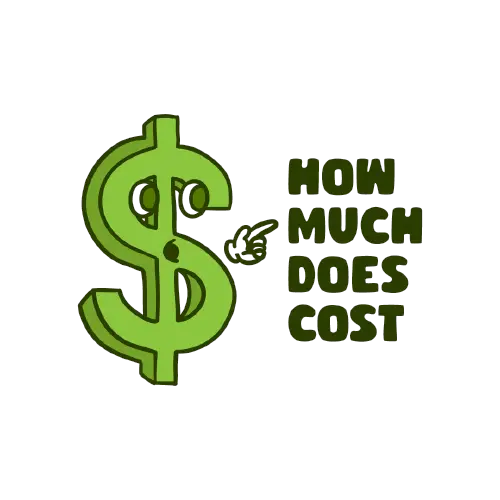Volleyball sports have become the most popular game in the world. It has been an official sport of the Summer Olympic Games since 1964.
Two players play the game; usually, six players are on a side, and players use their hands to hit the ball back and forth over a high net.
Volleyball can be played on an inside court or the beach.
Volleyball courts are flat horizontal playing surface which is specifically sized for the game of volleyball.
The court is marked horizontal area within which a game is played.
The standard volleyball courts are generally required space of 60’x30′. However, the size of courts is genuinely up to your choice, and you can build larger or smaller ones.
Table of Contents
Cost to build a Volleyball Court
If you really want to build a volleyball court, ready to pay a fair amount of time and money. On average, it may take $10,500 to $14,700 to build a volleyball court, but the price may vary depending on different factors, including court size, space, accessories used, etc.
If you want to build a sand volleyball court, then the price can be $35,000, but the price can also go higher.
Factors affecting the cost of volleyball Court
Excavation and grading
The cost of building a court mainly depends on land preparation. More complex work needs a high amount of cost. As building a court for volleyball requires a flat and hard surface, and making any surface flat can be very costly; there are different variables included;
- How ample is the space which needs to be excavated?
- Will any retaining walls need to be constructed?
- Can equipment access the area easily?
- Will there be any drainage problem that needs to be addressed?
Size of Court
This may seem an undeniable factor affecting the cost of building a volleyball court. But as the size of the court will be significant, more cost will be needed to make it.
One thing to note is that plastic court tiles can expand and contract about 2 to 3 inches, and it is good for the players to have some extra space beyond the court edges.
Accessories required for Volleyball Court
There are many things needed when building a volleyball court, including a net system. Buying and installation of the Net system are associated with high costs.
There are many other accessories for the sport, including game lines, containment fencing, rebounders, lighting, etc.
Design, Construction, and Installation
Just like other construction projects, there are a lot of details in designing and building your volleyball court. In general, the more elements you manage in a project yourself, the lower the costs, but you will have to work hard.
Additional lines and Logos cost
Some people also want additional lines on the court to use their volleyball courts for multi-sport games. You can choose from a number of line options according to your budget.
To make your court more appealing, you can add some additional logos or other artwork for your court by paying extra fees.
Volleyball Courts Surfaces
The flooring of volleyball courts must be the best type of flooring that includes the right shoe gripping and gliding features.
Floors must be smooth and consistent from end to end to accommodate players’ increasing athletic ability.
The running surface can also affect safety and comfort.
The performance of volleyball courts generally depends on what’s inside them. It’s possible to design and engineer wood and synthetic urethane for players’ safety and maximize performance.
Many researchers have spent decades developing the best and smooth surfaces.
There are different elements available for the flooring of the volleyball courts like vinyl, rubber, or plastic are also sometimes used for flooring.
But, because of the grip and slip properties of elastic flooring and vinyl flooring, they do not meet the competitive requirements of a volleyball game.
As they have high silkiness, so there is not enough shock absorption to prevent players from injuries.
The standard flooring of volleyball courts is made up of Vulcanized Rubber and PVC. Some distinctive features of these two areas follow;
PVC
PVC flooring is a most favorite choice for professional Volleyball courts. It is the most suitable and recommended material when excellent performance is needed.
In PVC flooring, the surface finish is designed to reduce the risk of friction burns and abrasion when players dive.
Standard volleyball courts focus on players’ safety, performance flooring, facility lighting, durable equipment, and maintenance budget. They are designed for the highest level of play.
Vulcanized Rubber
Vulcanized sports flooring is suitable for intensive surface use, which is ideal for schools or a multi-purpose spot. The rubber coating ensures the correct biomechanical response and shock absorption, while the upper finish ensures the proper handling of movements.
Vulcanized rubber flooring is very durable to use, easy to install. It offers sustainability, eco-compatibility, and excellent resistance to wear and tear.
Indoor Volleyball Courts Cost
The size for indoor courts is usually 18m x 9m in size. On the floor, there is a parallel attack line located 3m from the centerline.
In Indoor Volleyball courts, you can choose from fixed and removal solutions of flooring.
Both PVC and vulcanized flooring can be installed using glue which is applied on the floor surface, and it is a fixed solution.
Fixed solutions are more frequently used in schools and mainly for sports use.
When there is a need to use this floor for any non-sporting event, special protective flooring can be covered.
They can also be installed by using adhesive tape, and it is a removable solution.
This type of solution provides a facility with high-quality flooring that can be removed and stored for later without damaging it.
The total expenses to build an indoor volleyball court can range from $11,000 to a maximum of $35,000.
Outdoor Volleyball Court Cost
Outdoor volleyball courts are generally smaller of approximately 16m x 8m, and there is no attack line in them.
The average cost for building an outdoor court can be from $10,500 t0 $17,700.
Different outdoor surfaces are available today, including turf, real glass, and flex court premium outdoor tiles. Each surface possesses different benefits.
Beach Volleyball Court
Beach volleyball is played on sand and of a different size than indoor volleyball courts. The most recommended dimensions for beach volleyball court is generally 60′ by 80′ though the nets are placed at the same height as indoor volleyball courts.
The sand on beach courts must be 40cm deep.
Lines and Components of Volleyball Courts:
There are many components and lines related to volleyball courts. The court line includes;
- Court lines: The volleyball court has many lines that dictate the play of the game.
- Attack Line: attack line sits ten feet from the net on either side of the court. This line divides the frontcourt from the backcourt.
- Sidelines: sidelines tell about the ball and signal whether the ball is in or out. If the ball falls entirely outside of the lines, it is called out.
- Baseline: these lines are present at the back of the court on either side. Baselines are 29 feet and 6 inches across.
- Center Line: it lies directly under the net and divides the two sides of the volleyball court.
The components cost
The net: The net acts as a physical divider of the volleyball court with a height of 8 feet generally for men and 7 feet for women.
Front and Backcourt: The front and backcourts are on either side of 10-foot lines. They are not the same size as the backcourt is bigger than the front one.
Service Area: it is a space behind the baseline. The space of the service area can be different depending on the court.
The free zone: it is the area present outside the court’s boundaries where payers come to relax during out-times.
You might be interested: How Much Does it Cost to Build a Badminton Court?
Ground Application used in Volleyball Courts:
Acrylic ground Volleyball Court:
The acrylic court is a quick-drying, Ultra-Violent resistance and suitable for all kinds of weather conditions for indoor and outdoor field competitions.
The acrylic floor consists of synthetic coating, and bitumen modified synthetic surface regulator, and synthetic topcoat acrylic paint.
Tartan Floor:
The tartan floor consists of raw materials like SBR, which is layered on the bottom, and EPDM rubber granules, which are layered on the top.
They are applied as hot casting on-site with the machine, called paver. This floor is mainly laid as 8mm + 5mm.
Parquet Floor:
This wooden floor meets the ergonomic needs of athletes. It is an innovatively designed court that helps in energy recovery and power consumption reduction.
Flexibility is provided to the floor with exceptional rubber support used in the substrate.
Polyurethane Floor:
It is a kind of floor covering that is applied in one piece. It is a very flexible floor that does not slip and offers to choose from many color options.
By using polyurethane floor coating, matte or bright and even colorful surfaces can be formed. Polyurethane floor provides a shiny floor that where dust does not accumulate and can be cleaned easily.

